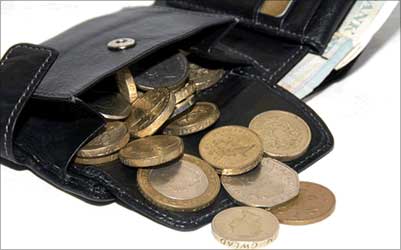 The Centre and states have crossed another hurdle in the way of Goods & Services Tax by agreeing on an annual turnover threshold of Rs 25 lakhs (Rs 2.5 million).
The Centre and states have crossed another hurdle in the way of Goods & Services Tax by agreeing on an annual turnover threshold of Rs 25 lakhs (Rs 2.5 million).
This means businesses with annual turnover less than Rs 25 lakh would be kept out of the GST purview.
To address the issue of dual control of traders -- by both the Union government and state governments -- in GST, it has been decided that taxpayers with annual turnover of over Rs 1.5 crore (Rs 15 million) would be taxed by the Centre, which will later disburse to states their share.
Similarly, those below Rs 1.5-crore turnover would deposit their taxes to states, which would subsequently pass on to the Centre its share.
Also, there would be a composition scheme (presumptive tax) for dealers with annual turnover of up to Rs 60 lakh (Rs 6 million).
A dealer could opt for a compounded levy of one per cent on taxable turnover, instead of paying GST at the standard rate; but he would lose the right to claim tax credit for these.
These decisions were taken last week in Patna by a technical committee on GST, comprising officials from both the Centre and states.
The group, which will have its third meeting next week, will give its report for consideration of the empowered committee of state finance ministers at its meeting in Mussoorie on May 10 and 11.
Currently, the threshold for central excise duty and service tax are annual turnover of Rs 1.5 crore (Rs 15 million) and Rs 10 lakh (Rs 1 million), respectively.
For value-added tax, it is Rs 10 lakh in most states.
With a threshold of Rs 25 lakh (Rs 2.5 million), the Centre will have an assessee base of about 200,000 for excise duty, compared with 130,000 at present. Its service tax assessee base, however, would come down from about 700,000 to roughly 250,000
In return, the Centre would get tax from about two million of the three million VAT assessees.
Earlier, states were insisting on retaining the threshold at Rs 1.5 crore (Rs 15 million) for the Centre and at Rs 10 lakh (Rs 1 million) for states, but the Centre wanted a common threshold of Rs 10 lakh. For inter-state movement of goods, which would attract Integrated GST, no threshold has been proposed; anybody moving goods from one state to another would have to pay the tax. An exception in case of IGST is that the traders might have to face dual control.
It is still to be decided as to who would collect tax in case of IGST.
“For inter-state movement of goods, it would be difficult to decide which state should collect the tax,” an official who attended the meeting told Business Standard.
The Centre has been saying it should administer these taxpayers, but states are not ready to yield control.
About 60 per cent of traders are involved in inter-state movement of goods.
Even with a cut-off of Rs 1.5 crore for dual control, the Centre would administer about 980,000 assessees, higher than its current assessee base of 830,000.
This issue may be further discussed at the next meeting of the committee on IGST.
A floor rate of 9-10 per cent for standard goods with a band of two percentage points, a lower merit rate of four-five per cent, a rate of one per cent for precious metals and service tax rate of eight per cent have also been discussed at the two previous meetings of the committee on revenue-neutral rate.
A small group has been formed to finalise RNR.
The third meeting of the committee is scheduled next week.










